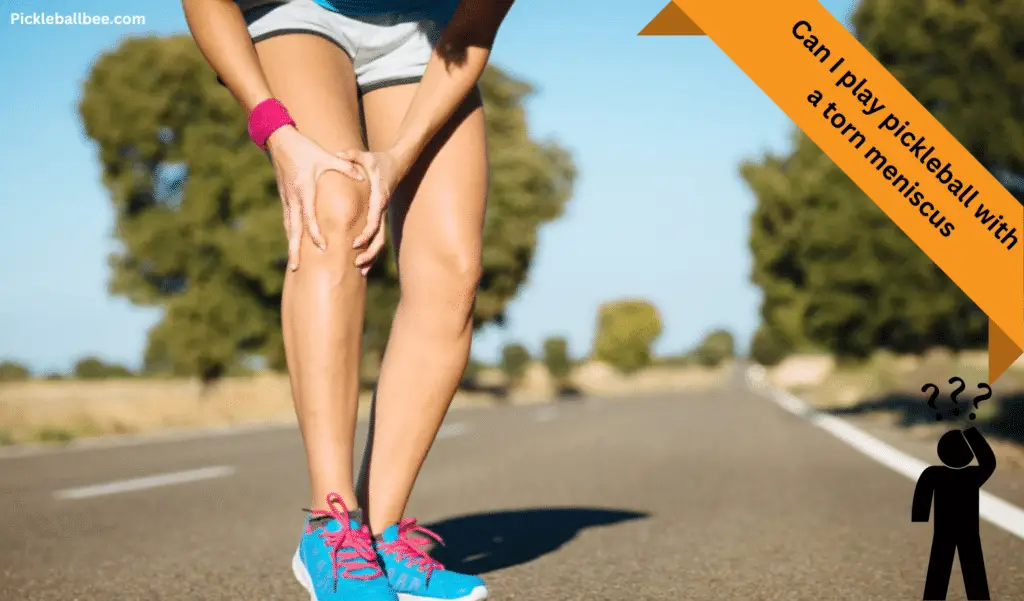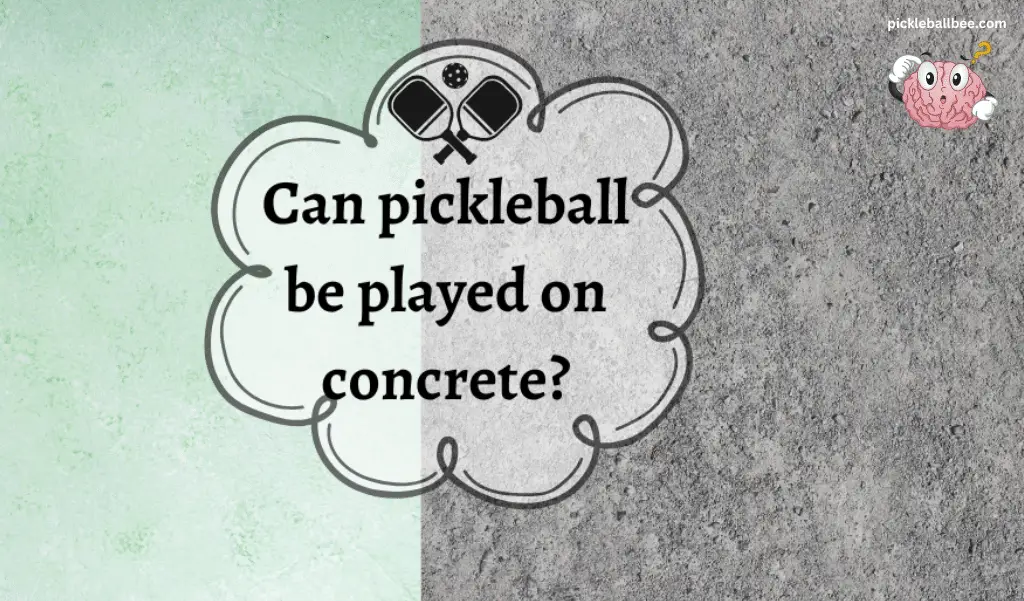
Are you considering taking up pickleball as a new hobby?
Whether you’re an experienced player or hitting the courts for the first time, understanding how “Indoor vs Outdoor Pickleballs” behave in different conditions is crucial for influencing your play.
For instance, do you know what key differences exist between indoor and outdoor pickleball? This blog post will offer an in-depth guide about these variations so that you can equip yourself before heading out onto the court.
From equipment adjustments down to adapting your strategy – we’ll cover everything that novice players need to consider when deciding where they want to practice their craft!
Is Indoor vs outdoor pickleballs the same?
The short answer is, No. Indoor and outdoor pickleball are two distinct varieties of the same sport. This distinction mainly applies to the environment in which you’ll be playing – whether inside or outside your home, local park, or court.
However, there are further distinctions between them to consider before you begin playing.

The Biggest difference between indoor and outdoor pickleball is their respective playing surfaces. Indoor courts are usually built from hardwood, with lines painted on top to indicate the court’s layout. Outdoor pickleball is played on concrete or synthetic turf, which offers a bit more give when you hit the ball – as opposed to its harder indoor counterpart.
An indoor ball has fewer holes and is made from a more durable material than the outdoor variety, which has more holes and is designed to be able to move quickly on a court.
The weight of indoor and outdoor pickleball balls tends to be the same (about 1.9 ounces), but indoor balls for pickleball can be slightly larger in size compared to their outdoor counterpart.
These factors all contribute to changes in the way you’ll play pickleball, depending on the environment. Outdoor courts require a more strategic approach due to their faster-paced nature, while indoor courts require precision and accuracy to make sure that your shots land within the hardwood court’s lines.
Types of Pickleball Balls?

Regardless of where you play pickleball, there are a few different types of balls to consider.
Indoor Pickleball balls, Outdoor balls, and Specialty balls.
There’s the indoor ball, which has smaller holes and is made from a durable material that can handle the hardwood surfaces they’re played on.
The outdoor ball has more holes and is designed in such a way that it can move quickly when hit on Concrete or turf.
In addition to indoor and outdoor balls, there are speciality pickleball balls designed for specific purposes. These balls may have unique characteristics, such as high-visibility colours for improved visibility, and extra durability for prolonged use.
Also Check: Best Pickleball Balls
Detailed about Indoor Pickleball?

Indoor pickleball is usually played on wooden courts with painted lines. The court dimensions inside will vary depending on the size of the venue, but generally, indoor pickleball courts measure 20 feet by 44 feet. The walls and ceiling are also included as part of the playing area, so you should be aware that any shot off the wall is still considered in-bounds. The court surface can be either hardwood or tile, which will affect the speed and bounce of the ball.
One of the benefits of playing pickleball indoors is that the game can be enjoyed in any weather. If you’re an avid pickleball player, playing indoors eliminates concerns about rain or extreme temperatures outside. It’s also a great way to stay active and have fun in the winter months when indoor and outdoor pickleball courts may be too cold or wet to play safely.
When it comes to the equipment used for indoor pickleball, it’s important to note that there are specific requirements. Most indoor courts will require the use of a low-compression ball.
This type of ball is designed with a softer material than outdoor pickleball balls and has less bounce. It’s also crucial that you wear proper footwear on an indoor court; most venues will require that players wear non-marking shoes with flat soles to minimize noise and preserve the court surface.
If you're new to the game of pickleball, playing indoors is a great place to start.
The court size and lower-bouncing balls make it easier to react quickly while also allowing you to gain confidence in your shot accuracy. Once you’ve honed your skills, you can then transition to playing outdoors for an even greater challenge!
Detailed about Outdoor Pickleball?

Outdoor pickleball is played on a court that is typically constructed from Concrete, asphalt, or sport court surfaces. Courts may also be temporarily built using portable nets and wood planks to create boundaries. The outdoor game of pickleball has a few key differences compared to its indoor counterpart, including:
- Larger Court Size: Outdoor courts are typically larger than their indoor counterparts and measure 20×44 feet. This can make it easier for players to cover more ground with volleys and enables them to hit shots from farther away.
- Weather Conditions: You’ll have to contend with the elements during outdoor play of pickleball, whether that’s wind, rain, or extreme temperatures. This can make it more challenging to play outdoors and requires you to adjust your strategies accordingly.
- Sunlight: The sun can create a difficult situation for outdoor pickleball players, as it can cause glare off the court surface and disrupt serves and volleys. It’s important to wear appropriate eye protection and consider scheduling your matches during cooler times of the day.
- Balls: Most outdoor pickleball games use plastic balls with holes, as they’re more durable than the standard indoor game balls. This type of ball often bounces higher off the court surface and is capable of traveling farther distances due to its weight.
Pros and cons of Indoor and outdoor pickleball?
When it comes to pickleball, you may find that you prefer playing Indoor or outdoor pickleball. Before deciding on which court to play in, it’s important to understand the pros and cons of each environment.
Indoor Pickleball:-
Pros
- Winds and other weather conditions don’t affect your game.
- The court is level and consistent, making it easier to bounce the ball correctly.
- There’s less of a chance for the ball to be lost outside of play.
- Indoor courts are usually climate-controlled and feature lights so that you can play day or night.
Cons
- You may experience echoing sounds within the court, making hearing the ball’s bounce harder.
- There is a higher chance of sweating due to the closed environment, and you must be mindful of other players who are on the courts nearby.
- The air in indoor courts can get stagnant from time to time, so ventilation is key.
Outdoor Pickleball :
Pros
- You get to enjoy the sunshine and fresh air while you play.
- The atmosphere is more relaxed and friendly, as you can interact with other players on the court.
- Hearing the ball bounce is easier due to fewer echoes in an open space.
- You can feel the wind and take advantage of this to your benefit (but be careful of winds that are too strong, as it could affect your game)
Cons
- The elements, such as rain and heat waves, can affect play.
- The court surface may not be flat, making it harder to bounce the ball correctly.
- It’s more difficult to find an outdoor court with lights, so you will be limited in when and how long you can play
- There is a higher chance of losing the ball due to its size and open environment.
No matter if you choose to play indoors or outdoors, pickleball is a great way to get some exercise and have fun with friends. Understanding the key differences between indoor and outdoor pickleball will ensure you have the best possible experience wherever you decide to play.
Good luck, and happy playing!
Conclusion:-
Whether you prefer to play indoor or outdoor pickleball, it’s essential to understand the pros and cons of each environment before hitting the pickleball court. Indoor courts can provide a more consistent playing surface, but outdoor courts offer sunshine and fresh air. Understanding these differences will help ensure you have the best possible experience no matter the court type you choose. So, grab your racquet and prepare for a fun pickleball game! Happy playing!
FAQs:-
1. Can you play indoor pickleball outdoors?
Yes, it is possible to play indoor pickleball outdoors. However, you will have to adjust your strategies and techniques accordingly. While the ball used in indoor pickleball is a softer plastic, typically lighter and more durable than the standard outdoor game ball, the court surface will likely be uneven, making it harder to control the ball’s bounce.
2. Do you need a special ball for indoor pickleball?
The main differences between indoor and outdoor pickleball include court surface, weather conditions, ventilation, sound effects, and ball type. Outdoor courts are usually made from asphalt or concrete, while indoor courts are typically made from wood. Outdoor pickleball is also more susceptible to weather conditions such as rain or wind, while indoor is highly affected by ventilation and sound effects.
3. What are the main differences between outdoor and indoor pickleball?
The main differences between indoor and outdoor pickleball include court surface, weather conditions, ventilation, sound effects, and ball type. Outdoor courts are usually made from asphalt or concrete, while indoor courts are typically made from wood. Outdoor pickleball is also more susceptible to weather conditions such as rain or wind, while indoor is highly affected by ventilation and sound effects.
4. Can you use indoor pickleballs outdoors?
Yes, indoor pickleballs can be used outdoors, but they may not perform as expected. Outdoor conditions affect their flight and durability. For the best experience, it’s wise to use outdoor-specific pickleballs that are designed to handle wind and rough surfaces, ensuring a fun and competitive game.


